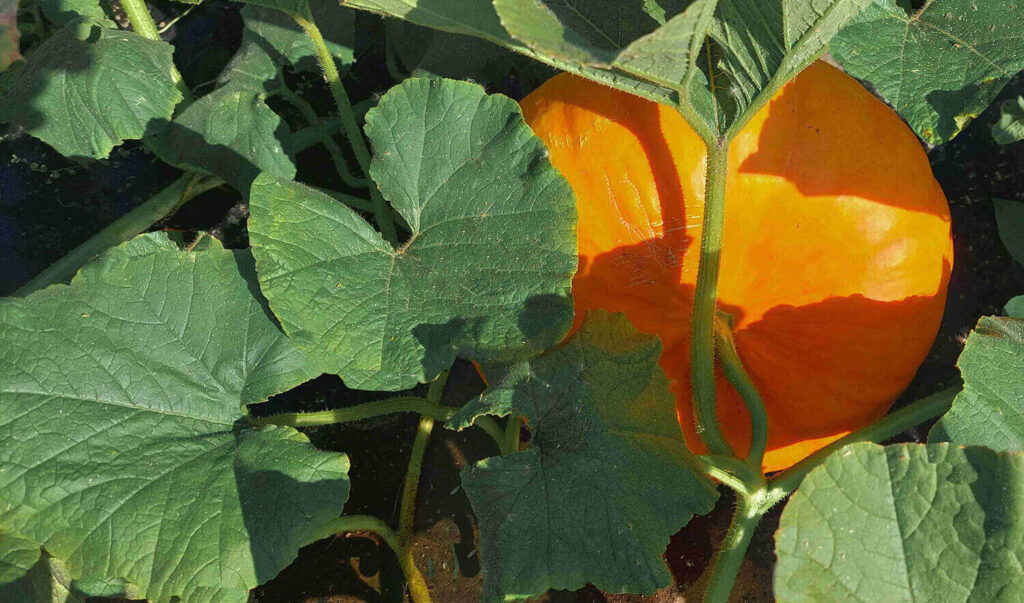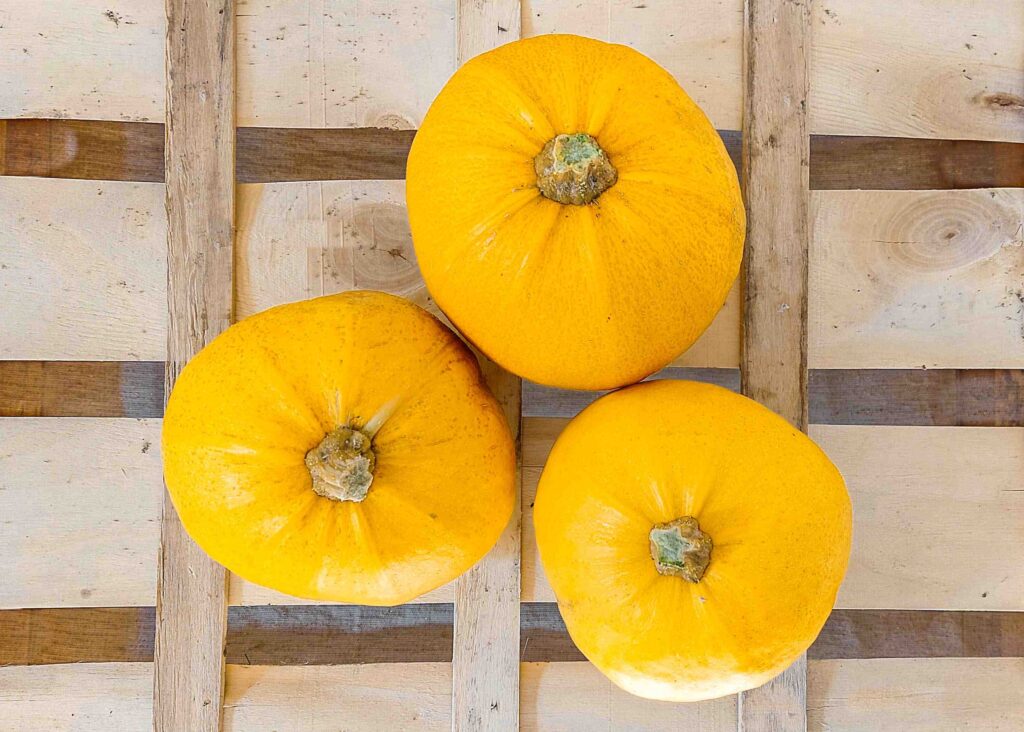WINTER SQUASH
These days we notice the passage of time based on what vegetables come into season for harvesting. Strawberry season was just yesterday and now we are tip-toeing into squash season. Patches of green, orange and yellow squashes grow with more and presence in our fields. We started these all from seed and many are now fully grown in different colours and sizes. We commonly hear about butternut squash, but there are so many more options worth tasting!

One common denominator despite their variety is that they’re delicious and undeniably nutritious. There are so many health benefits to these powerhouse vegetables (though technically a fruit as they have seeds). Squash is a fantastic source of fiber and low in calories. Like carrots or sweet potato, they also contain beta carotene which can help reduce risk of cancers. Squash in your diet also provides vitamin A, vitamin C, B vitamins, calcium, and potassium.
We have 11 different varieties of winter squash grown on our field.
Check our our squash profiles below!

Courge Melonette Jaspée de Vendée
This is a French heirloom squash originating from the Vendee region in the 1700s. It has a thick, orange skin with a very sweet flesh.
It’s a versatile squash that can be roasted, made into a purée, soup, risotto, tart or even shredded raw into a salad.

Potimarron Blue Ballet (Blue Hubbard)

This heirloom squash is large in size, averaging around 30cm in diameter. It has a lovely blue tinged skin that should be removed before eating. It is a squash that can be used as a replacement for recipes that call for butternut squash or pumpkin.
Preparations include roasting, boiling or steaming. You can expect your purchased squash to last up to 6 months in a cool dry place (for example in a cellar).
Potimarron Buttercup (Buttercup Squash)
Buttercup is a sweeter variety of winter squash with a greenish grey colour skin. It has a dense and firm nutty but sweet flesh. The seeds can also be roasted as a nutritious snack just like pumpkin seeds. We don’t recommend peeling this squash before cooking as it can be a challenge. Instead, you can cut it in half, scoop out the seeds and roast in the oven to soften the tough exterior. Roasting the squash will also allow the natural sugars to caramelize. Delicious in soup, stews, pastas, pies or on its’ own as a side dish.

Potimarron Red Kuri

Potimarron Green Hokkaido
Green Hokkaido is also known as Japanese squash. These fruit are roughly 15cm in diameter with a dark green skin with light stripes. It has a firm and dry yellow-orange flesh with a delicious chestnut-like flavour. Roasted and eaten in a soup or salad are favourite recipe options. They can also be stuffed and roasted with red pepper, rice, onion and sausages for example.

Below are additional squash varieties we have harvested from our fields but not mentioned above:
Courge Musquée Butternut
Courge Musquée Honeynut Courge Spaghetti
Potiron Delicata (Sweet Potato)
Potiron Rouge Vif D’Etampes